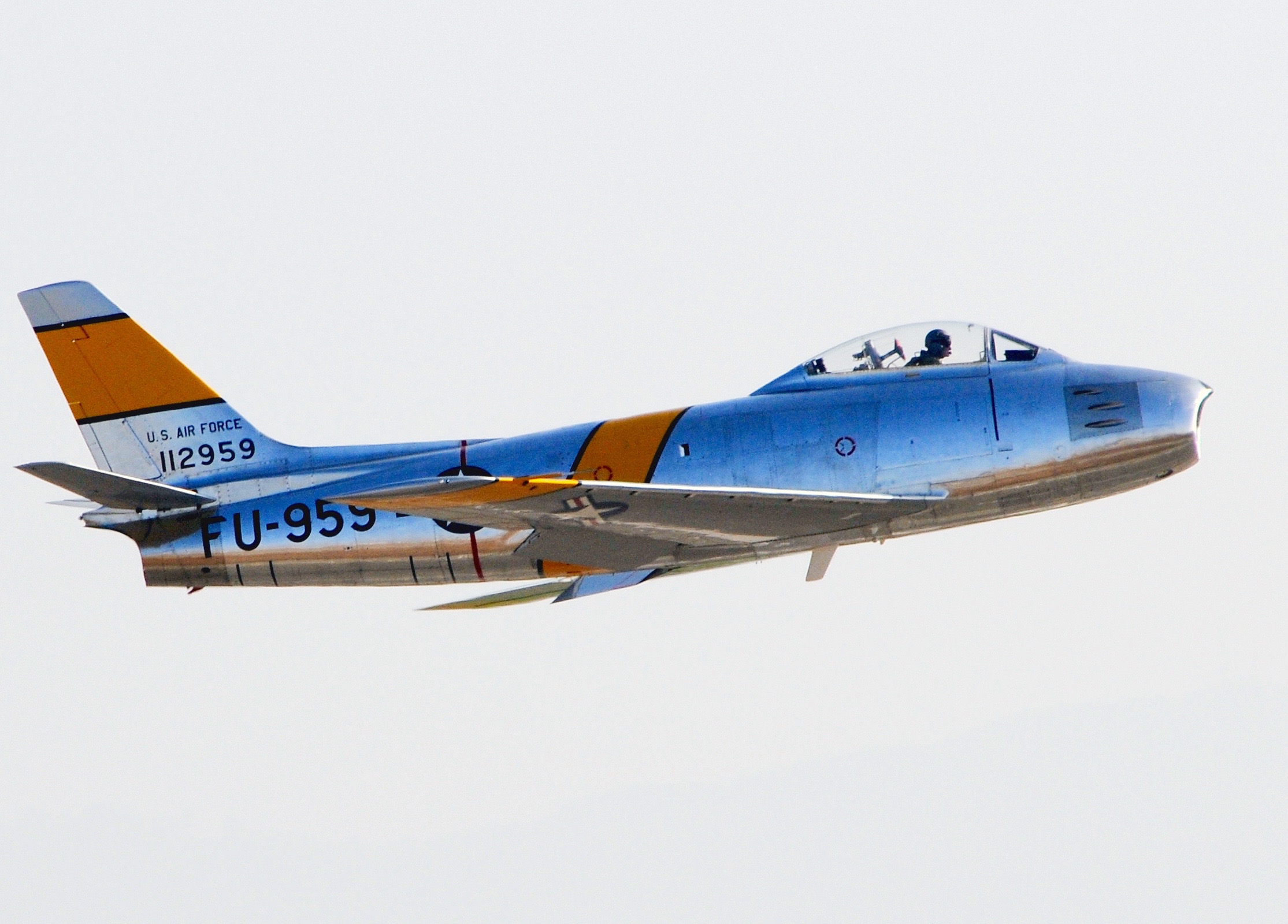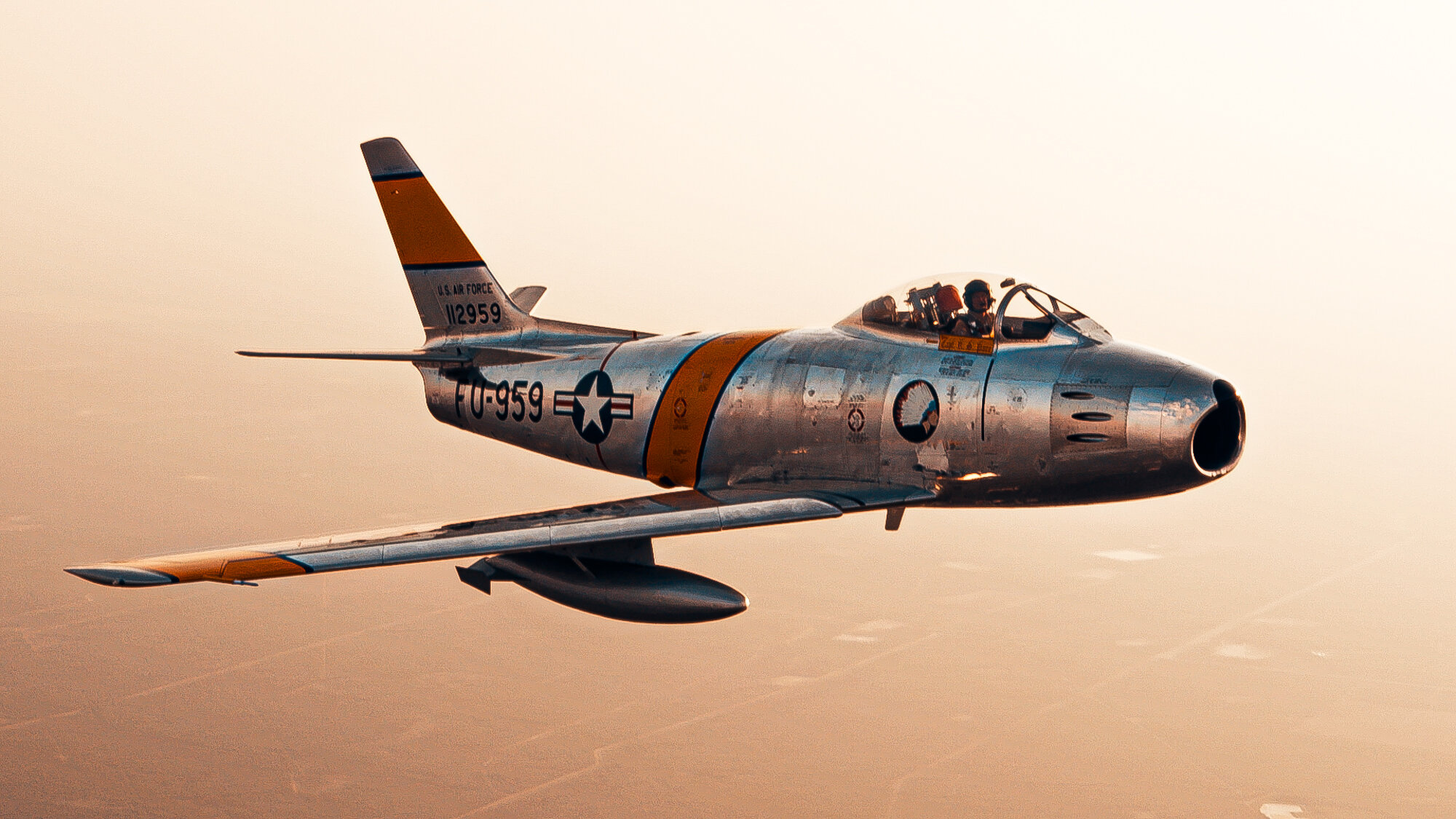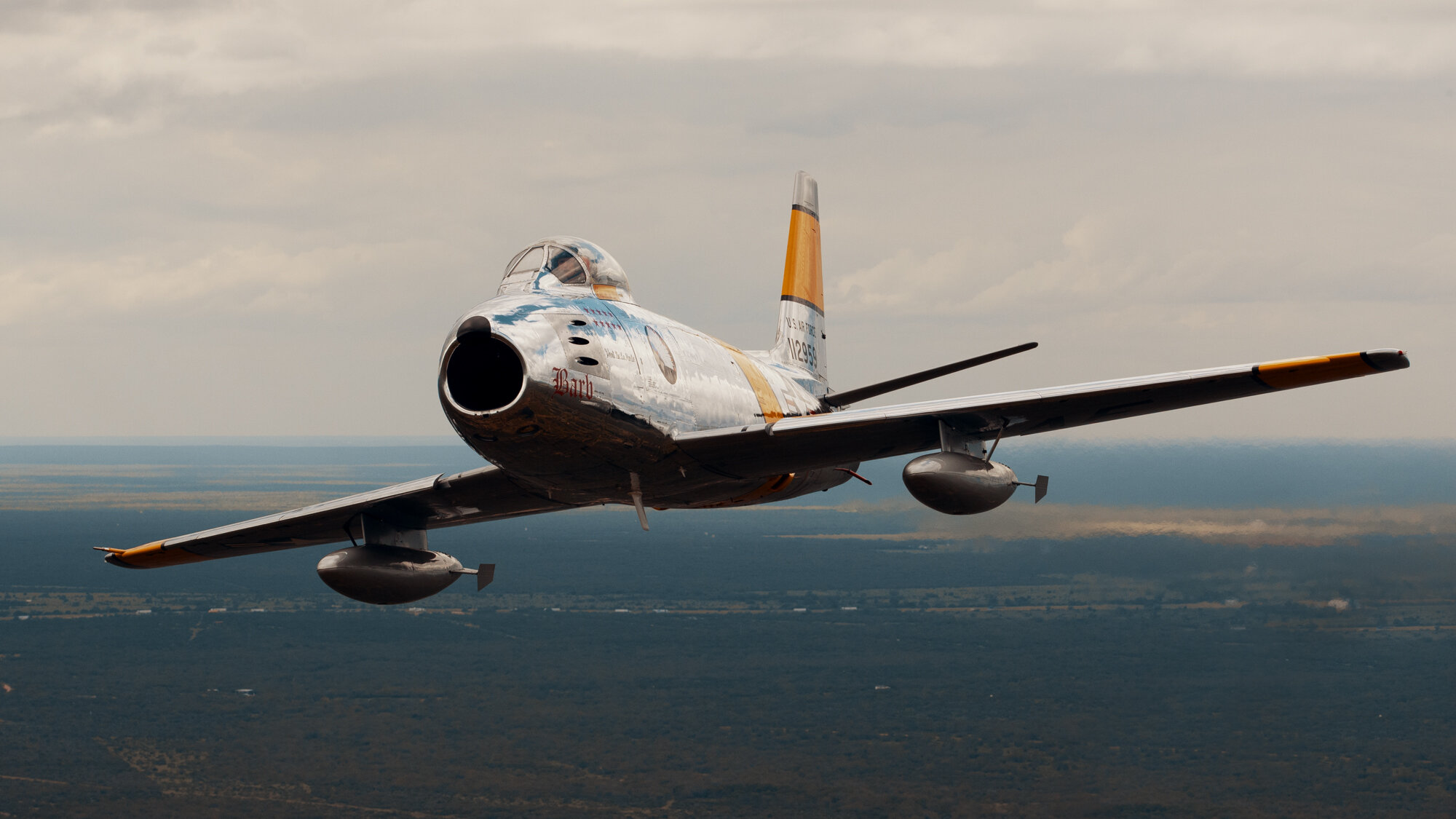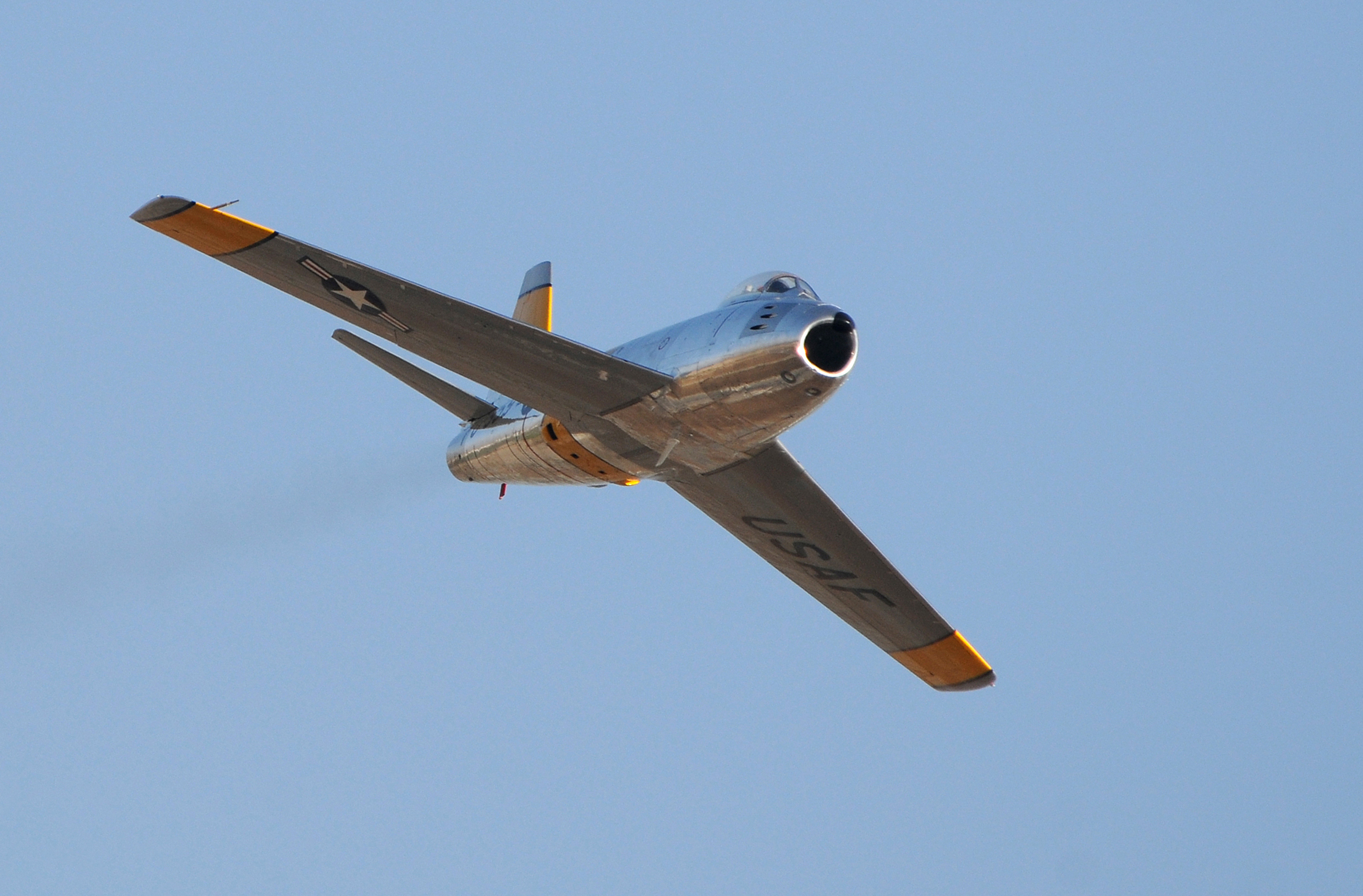Mk 6 F-86 Sabre









Mk 6 F-86 Sabre
Manufacturer: North American Aviation / Canadair
Model: Mk 6 F-86 Sabre
Tail Number: N186PJ
With its roots in the waning days of World War II, the F-86 Sabre went on to become a hero of the Korean War and a mainstay of Western air forces through the 1950s and into the 1960s. An estimated total of about 9,860 jets were produced – more than any other Western jet fighter – although perhaps fewer than two dozen of these important, capable aircraft remain. North American Aviation, producers of the legendary P-51 Mustang, began work in 1945 on a jet fighter to take the reins from the propeller aircraft that helped win World War II. Early plans called for a straight-wing structure similar to the P-51. But advanced aerodynamic research was seized from German laboratories toward the end of the war, and North American Aviation was the first to incorporate these insights into an aircraft design. According to these findings, a thin, swept-back wing results in significantly reduced drag as an aircraft approaches the speed of sound. The first XP-86 Sabre prototype, with a 35° swept wing, rolled out in August 1947, and the United States Air Force Strategic Command began to deploy the new fighters in 1949, just in time to become a major factor in Korea. In that conflict, the F-86 Sabre faced off against the renowned Soviet swept-wing fighter, the MiG-15. On paper, the MiG-15 was superior in many respects: higher ceiling, faster acceleration, faster climb and zoom. The early variant F-86s could out-dive the MiGs. Despite these disadvantages, the F-86 in the expert hands of veteran American pilots enjoyed an 11:1 kill ratio. By 1953, with the introduction of the F-86F, the Sabre had effectively caught up with and perhaps surpassed the MiG-15 in performance.
Several people involved with the development of the F-86, including the chief aerodynamicist for the project and one of its other test pilots, claimed that North American test pilot George Welch unofficially broke the sound barrier in a dive with the XP-86 while on a test flight on 1 October 1947 – two weeks before Chuck Yeager was credited with being the first to break the sound barrier in a Bell X-1. The F-86 officially broke the sound barrier in April 1948.
The F-86 continued to be improved and upgraded, and was produced on contract by several other manufacturers, including Canadair in Montreal. Canadair produced a series of F-86 variants, culminating with the Mk 6, the last and considered to be the best Canadian Sabre production version ever built.
The Lewis Air Legends F86 Sabre Mk. 6 was built in Montreal (construction No. 1710) as part of an order by the German Luftwaffe. It made its maiden flight on 18 April, 1958, and served in the West German air force marked as JB-240. From 1970-77, a civilian contractor in Germany used it for target towing for the air force. It was then sold and stored in England until it was sold in 1981 to Tracor Flight Systems in Mojave, California. Air Spray Ltd of Red Deer, Alberta, Canada, bought the aircraft in 1998 and used it for target towing at Canadian Forces Base Cold Lake until 2005. Classic Aircraft Aviation Museum in Hillsboro, OR, bought it in 2008 and registered it as N186PJ.
SPECIFICATIONS
Wing Span: 37' 1.5"
Length: 37' 6"
Height: 14' 9"
Max Speed: 710 mph
Gross Weight: 17,560 lbs
Power Plant: Avro Canada Orenda 14 Turbojet
Thrust: 7,275 lbf
ARMAMENT
Guns: 6 x .50 in (12.7 mm) M2 Browning Machine Guns
Bombs: 5,300 lbs on four external hard points
Missiles: 2 x AIM-9 Sidewinders
Rockets: Variety, e.g. 2 x Matra rocket pods with 18 x SNEB 68mm Rockets Each
